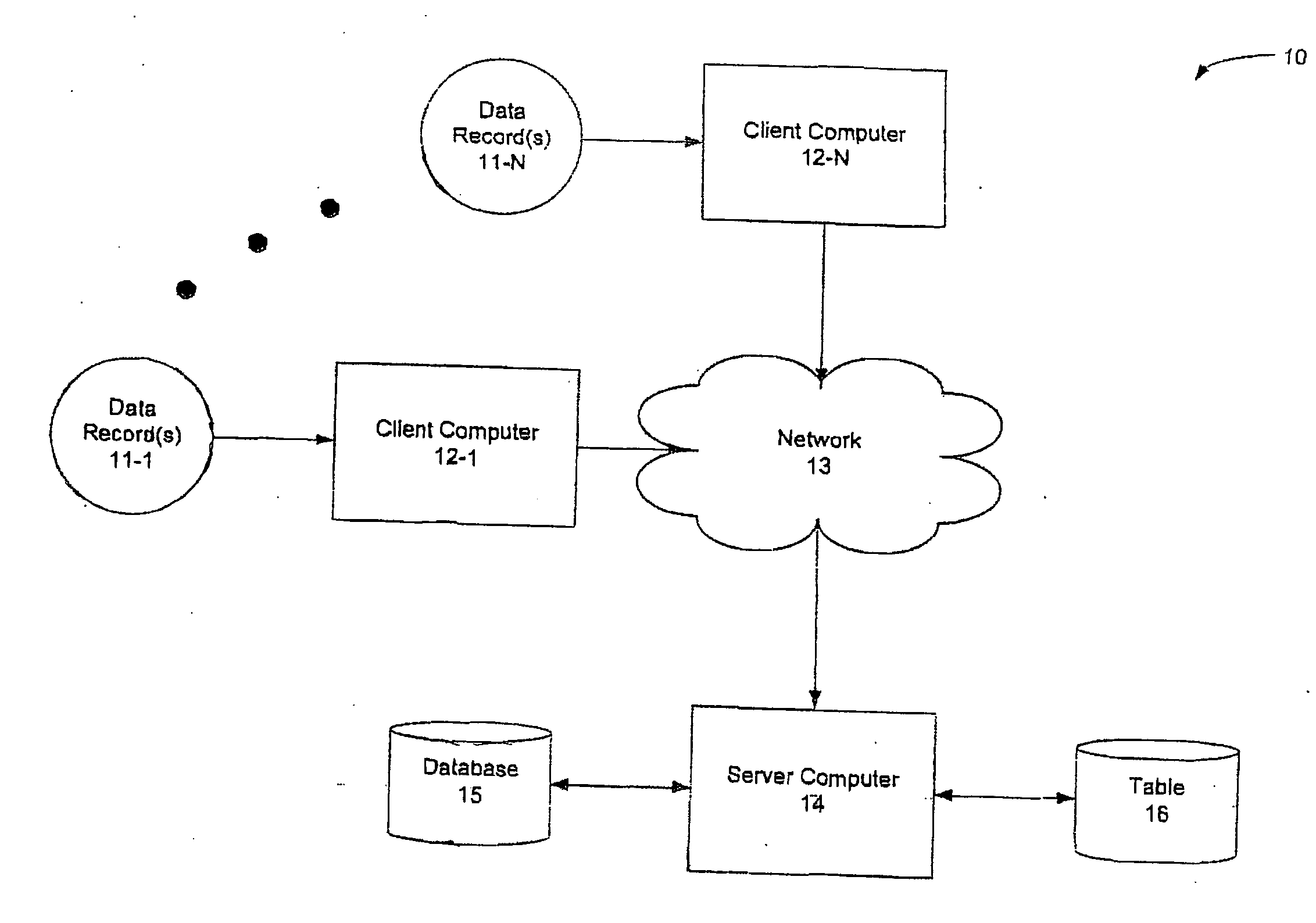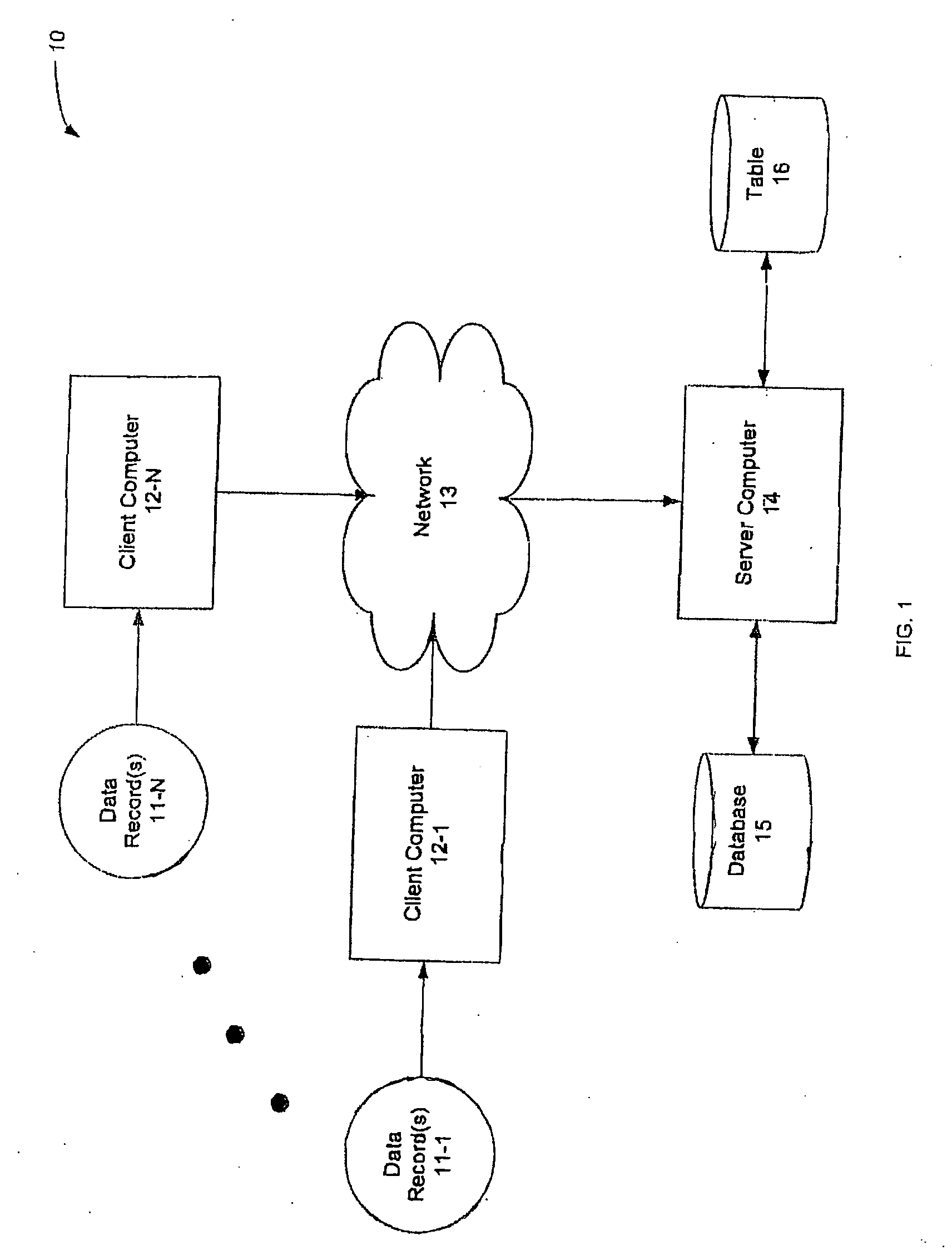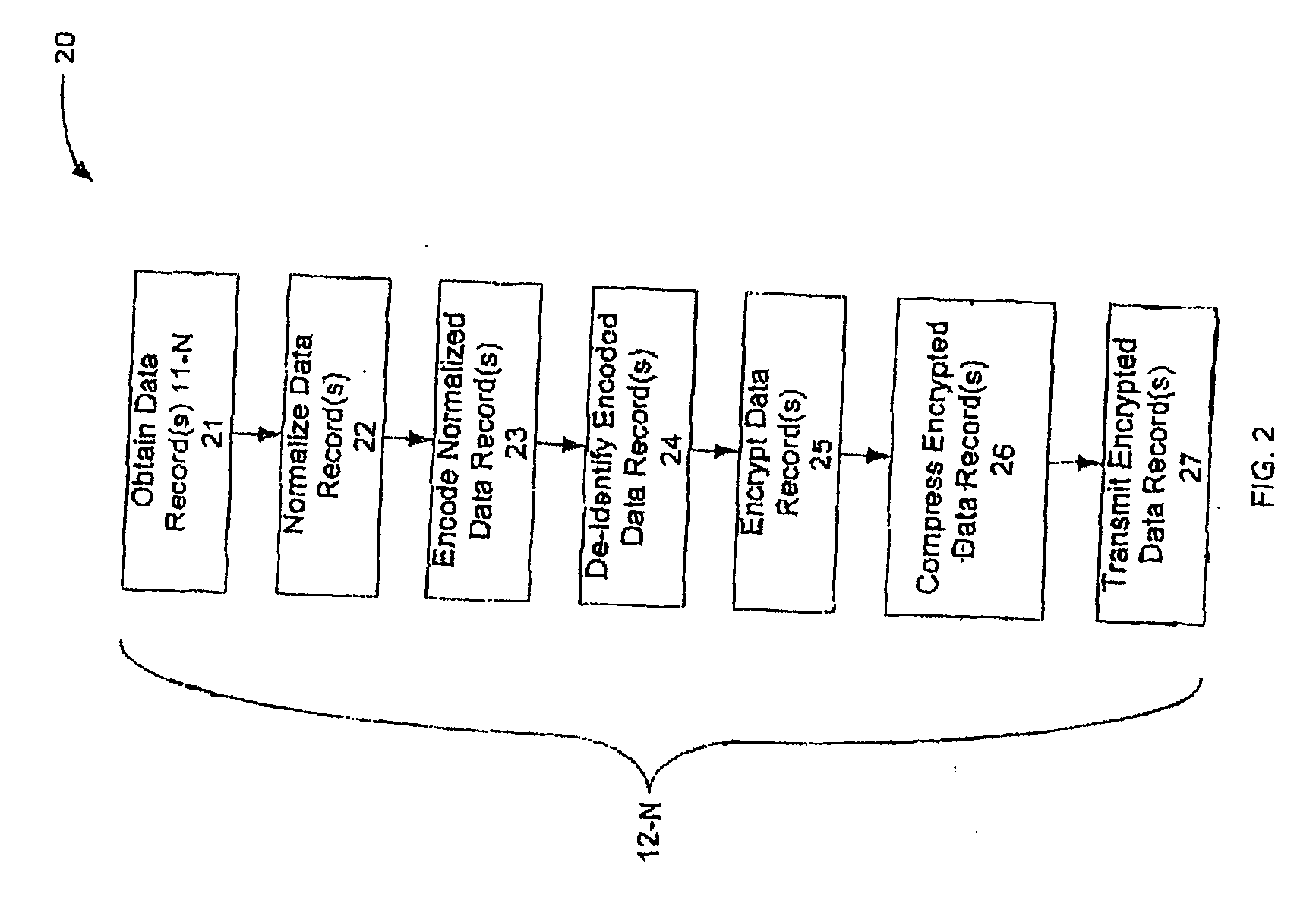De-identification and linkage of data records
a data record and identification technology, applied in the field of deidentification and data record linkage, can solve the problems of actual and potential impact on the lives of individuals based on collected information, the risk of loss of an individual's privacy, and the inability to protect privacy interests, so as to facilitate the protection of privacy interests
- Summary
- Abstract
- Description
- Claims
- Application Information
AI Technical Summary
Benefits of technology
Problems solved by technology
Method used
Image
Examples
Embodiment Construction
[0032] Prior to beginning a detailed explanation of aspects of the present invention it is important to first set out some more information regarding de-identification and record linkage systems that have been used in the past. Generally these systems fall into one of two categories namely, deterministic matching and probabilistic matching. Deterministic matching refers to table-driven, rule(s) based matching where date fields are evaluated for a degree-of-match, and a match or no match resultant is assigned to each field comparison. Match and no match (yes's and no's) form match patterns that may be looked up in a table of rules to determine if compared data records match, do not match, or are in an undetermined state with respect to whether or not they match. Deterministic matching, like all linkage, is subject to false positive matches and false negative matches. False positive matches occur when matching records are linked together but actually belong to different entities, and ...
PUM
 Login to View More
Login to View More Abstract
Description
Claims
Application Information
 Login to View More
Login to View More - R&D
- Intellectual Property
- Life Sciences
- Materials
- Tech Scout
- Unparalleled Data Quality
- Higher Quality Content
- 60% Fewer Hallucinations
Browse by: Latest US Patents, China's latest patents, Technical Efficacy Thesaurus, Application Domain, Technology Topic, Popular Technical Reports.
© 2025 PatSnap. All rights reserved.Legal|Privacy policy|Modern Slavery Act Transparency Statement|Sitemap|About US| Contact US: help@patsnap.com



